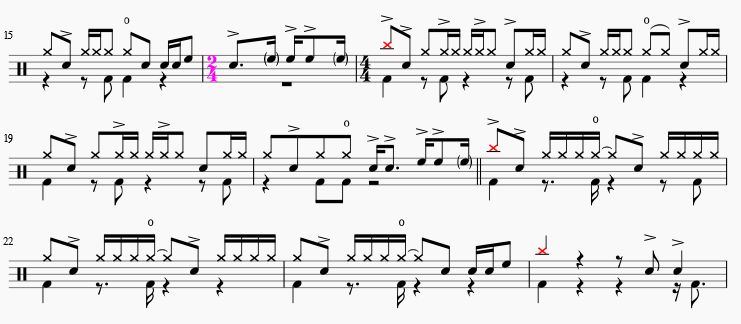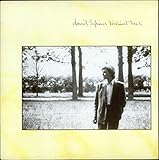Red Hot Chili Peppers - Stone Cold Bush is a level that can be arrested in US
Let's take up a song of Red Hot Chili Peppers we all love!! From the album "Mother's Milk" in 1989 which is the first hit in RHCP's history, "Stone Cold Bush"!
![Mother's Milk [Explicit] Mother's Milk [Explicit]](https://images-fe.ssl-images-amazon.com/images/I/51hxUDX7I9L._SL160_.jpg)
- アーティスト: レッド・ホット・チリ・ペッパーズ
- 出版社/メーカー: EMI Catalog (USA)
- 発売日: 2006/03/21
- メディア: MP3 ダウンロード
- 購入: 1人 クリック: 1回
- この商品を含むブログを見る
The sound pressure level of the recorded sound in this album is somewhat low. We have to turn up the volume a little when we listen. However, be cautious when you listen to it for a long time in a closed room turning up the volume. Because you might trip to a trance state since quite uneasy and ominous sounds intensely come one after another, back and forth, and up and down. Turn the sound down a little and moderately ventilate your room!
Now, the beginning of the song goes like this:
(00:00-)

In seconds after the song begins, we find ourselves in the first verse already because the tempo is fast and Intro has only 4 bars. It's a quick turnning. The drum responds with "Ta, chii, chii" to the freewheeling shouts of the 2nd bar, and changes to the smooth open hi-hat pattern to the tenuto riff at the 4th and 8th bars. You play there enjoying an ensemble every member in your band together.
The 3rd and 4th beats of the 6th bar are 16 notes offbeat chop by drums and bass. That is the usual line of RHCP - no, of the bassist Flea (real name Michael Balzary). We are impressed with its groove, technique and authentic ensemble by the two. Oh yeah, it would sell a lot for sure if you have such a bass and drums! To keep grooving just right like them even in this fast tempo, a bass and drum players have to be compatible with each other.
Go on to the chorus with the lyrics "She's Stone Cold Bush!":
(00:35-)

The drummer Chad Smith kicks like below on the first beat of almost all the bars. He seems to play automatically when he plays a funky pattern.

On the other hand, only in the chorus part he intentionally changes the pattern of the kick using 8th notes. That makes the chorus bring about a kind of stable feeling. At the 1st and 2nd bars, two kicks in 8th notes. On the 3rd and 4th bar, it changes a bit and the 16 notes offbeat chop comes again. What an elaborated section.
I thought that I had heard a similar song to the chorus, and found that it was a song of nostalgia Tokyo incidents. That is, 00:35- of Stone Cold Bush is similar to 0:52-0:55 and 1:05-1:08 of the song below. I'm not sure I can convey to you what I hear.
Let's go back to Stone Cold Bush. I put the ending as a bonus.
(02:54-)

This song has only 3 minutes, but is a very attractive one packed with good phrases and well-composed sections. I just want to play it in a band exactly the same as RHCP. Only one spot in the sun is that the tempo becomes slightly slow and as a result the driving force of the song gets weaker, around the guitar solo (1:32-) where he switches to the ride cymbal.... No, don't be distracted by small details. I have to put perfectionism aside. Do nothing but just listen at full volume to go off into a trance!
Thanks,
Scramble to come over here for Talco - Signor Presidente
Let's take a look at an Italian Latin alternative band Talco! I checked what kind of band Talco is on this occasion, and found that they are inspired by The Clash and Ska-P. Knowing that there is an influence of Ska-P who I picked up previously, I think something catching that I'm not unaware have been attracting me.
Their style is in a category called "Patchanka". Patchanka is Latin alternative or Alterlatino which features a sound that mixes alternative rock, electronica, metal, new wave, pop rock, punk rock, reggae, ska, traditional Latin American music, etc. All right I do not understand.
(Also see Ska-P in the previous article)
Talco's music goes basically with power-chord guitar riffs. The particular chord progression Im - ♭VI - ♭VII - Im (e.g. A#m - F# - G# - A#m) appears in multiple songs. I would say that appears in a bit abnormal frequency. Strangely enough, however, each song is unique. Their horn section sings steadily in most of songs, and their songs are characterized by remarkable catchy themes and melodies. Listening to their songs always force me to sing together.
In fact, hearing Talco's live recording album "10 Years - Live in Iruña", audiences sing along to almost all parts of the songs. This is really amazing. The audiences are singing all melodies completely. Of course not only the lyrics part, but also the horn's melody. What is extraordinary here is they are singing the guitar riff as it is. I understand the feeling of the audiences. I want to sing along to everything! Cool as hell.
From such a catchy band Talco, let's see the song "Signor Presidente" from the album Tutti Assolti.
The basic pattern is the high speed thrash beat pattern commonly heard in metal and punk music meaning the pattern in the 17th bar on the following score (How do you call it? Two-beat?). Because bass drums of the basic pattern are a bit clumsy, maybe he did not use double bass nor a twin-pedal.
After that, the song came round, it suddenly switches to an awfully cool horn section and drums go with the ska-like pattern like this:
(4:28-)

I picked up here because I was concerned about the pattern starting from the 9th bar. Although it seems normal, the position of the snare accents is actually a bit tricky in the 1st and 2nd beat after the 9th bar.
Until you come to the 9th bar, snare accents are on the backbeat (the 2nd and 4th beat). After the 9th bar, there is accents at 8th note offbeat of the 2nd beat and the 4th beat, and it sometimes matches with the right hand hi-hat and sometimes not. Perhaps it may come from a drummer's own autopilot. The phrase sounds easy but you could get awkward around the phrase if you have never moved both hands like that.
I looked into a rather small detail this time because I thought that I could not catch it up unless I transcribe and analyze it. A sort of my personal memorandum. I transcribed and analyzed it and now I can play it. And they all lived happily ever after.
Thanks,
The way of David Sylvian - Pulling Punches is living as though one was already dead
How's your life with drums going? Well, let me persist with Steve Jansen since I took up a song of Japan last time and I got curious more about his performance.
Let us see the first song "Pulling Punches" recorded in David Sylvian's solo album "Brilliant Trees". Yes, that is David Sylvian of Japan that Steve Jansen participated in. I have no idea, but there might be feuds among members or mental processes around them. Let me omit it and here I just check the music and sound.
See also the previous post:
Here's the drum part from the beginning.
(0:00-)

I get an impression that it is artificial due to the unusual position of accents. The orchestral hits are on the initial 8th note offbeat and the accents of hi-hat are intentionally put on certain positions. Such artificial patterns go on in a deliberated manner in each phase (1st and 2nd verse, chorus, etc.), and fairly adhere to the plan through the song.
Then from the 2nd verse:
(1:02-)

A fill with toms and with snare in the 4th bar is just before the chorus, then the slightly muted China cymbal blows out! I highlighted it on the score in red. Like mentioned in the previous article, the glittering China cymbal is just simply cool! He strikes China cymbal instead of crash cymbal at the turns of the song. That draws a line between this song and other vocal songs. Immediately after that:

2/4 inserted in the chorus unpredictably. You hear a simple fill just adding subtle intonation to toms on this surprising 2/4. Tastes great, less filling. It is so unpredictable that I highlighted it in pink on the score. It is tasteful because it is simple. Also note how powerfully the Chinese cymbal highlighted in red explodes.
Listening to other songs of this album "Brilliant Trees", all are well-planned in detail ("Nostalgia" is particularly evident). It seems that most of all drum patterns are looping by a computer music sequencer. But he does not really use a sequencer. I think Steve Jansen likes to play those manually and in real time. Not masochism, but a meditation. He plays as if he were a machine to produce a loop and achieves his deep meditation.
Thanks,


